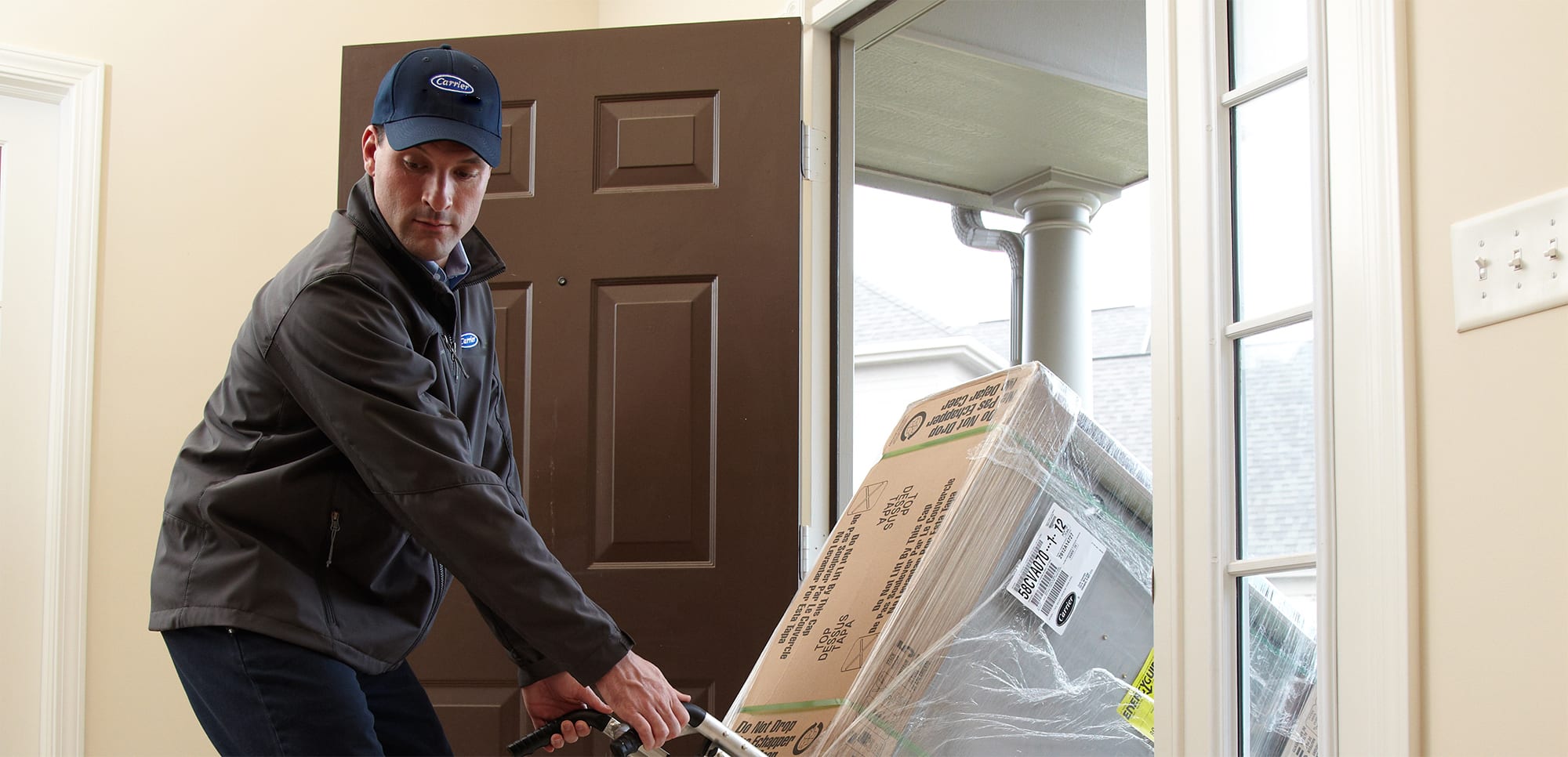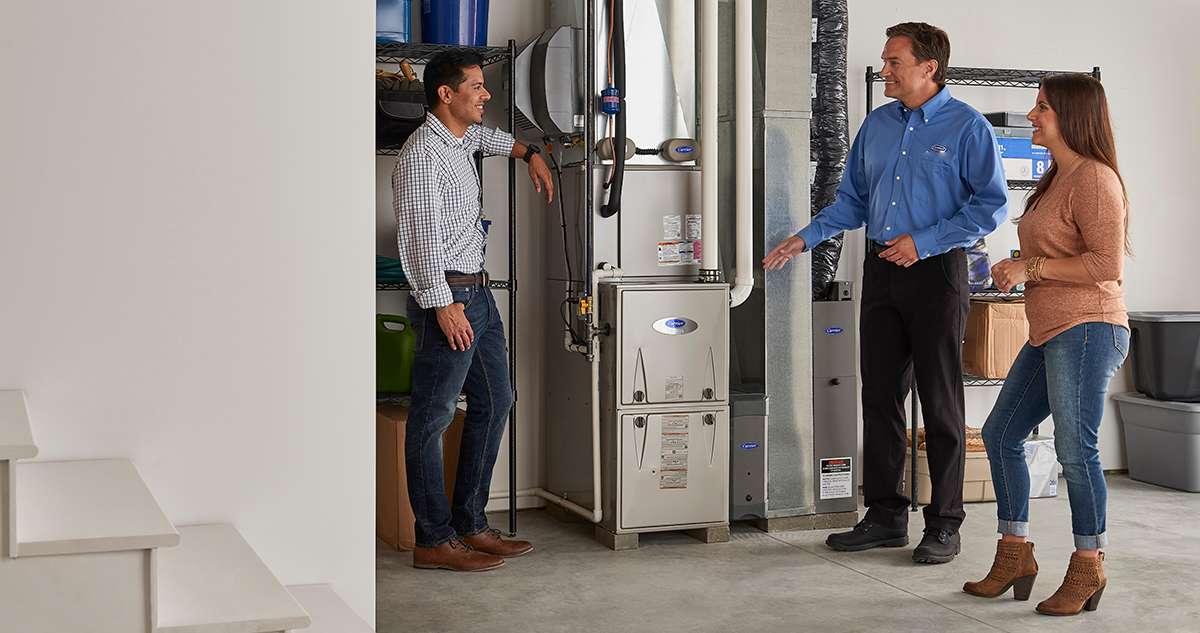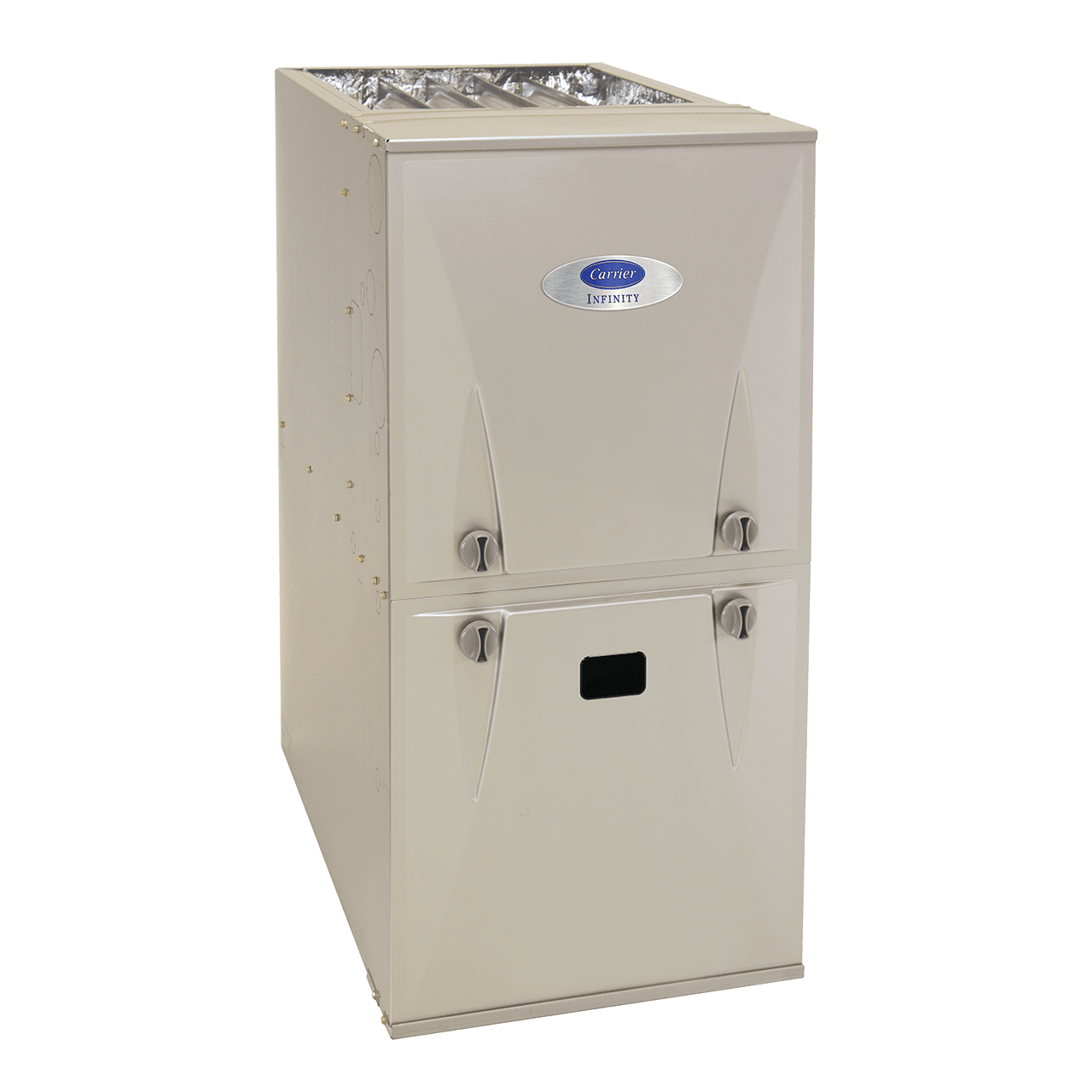Guide to New Furnace Cost in 2025
Ask twenty professional HVAC contractors the question, “How Much Does A New Furnace Cost?” and you’ll probably get the same answer... “It depends.” On average, the cost of a new furnace can range from $2,000 - $14,2001. However, factors like furnace efficiency, type, size, and much more can impact this range. In 2025, furnaces are available with a wide variety of comfort-enhancing technologies, and can be much more sophisticated than older continuous pilot light/natural draft models.

For example, Carrier offers a comprehensive line of furnaces to fit nearly any need and budget. And with models ranging from the very basic minimum-efficiency models to deluxe ENERGY STAR® units with up to 98.5% efficiency and all the bells and whistles, furnace prices can vary quite a bit.
And don’t forget installation. Is it a first-time installation, or are you replacing a furnace system that already exists? Does the ductwork need work? Is there a disposal fee for the old furnace? What about money back through government or utility-issued rebates? With all of the variables involved, the most accurate answer to the question “how much is a new furnace?” will come from an experienced HVAC pro after an assessment of your home, comfort needs, and budget.

4 Factors That Impact How Much A New Furnace Costs
1. Furnace Manufacturer
Factors that can affect new furnace prices will vary, starting with the manufacturer. For example, are you looking at a furnace from one of the top-tier brands, or are you looking at a lesser-known or budget brand? The top brands like Carrier and its competitors will likely command a slightly higher price point. This is due to factors like using better quality materials, investing more resources in product reliability testing, multiple manufacturing quality checkpoints and more.
2. Cost of Installation
When buying a furnace , the cost of the furnace itself is just one part of the equation. Installation costs and labor costs can significantly add to the overall cost to replace a furnace. For example, when replacing your older furnace , the new model is probably not going to be precisely the same physical size as the old one. That means there may need to be some modification of the ductwork to make the connection. The ducts may need to be cleaned and sealed as well.
It is also common that when installing a furnace , the new furnace also may not perfectly align with the existing gas line, electrical hookup, and exhaust venting. If you are upgrading from a low or mid-efficiency furnace to a 90%+ AFUE model, your contractor may need to install intake and exhaust PVC piping. When installing the wall control, some controls require 4-wire installation. If only two exist at the thermostat location, the technician may need to install additional wiring.
Pricing for furnace installation can vary from dealer to dealer as well. Some HVAC dealers might offer discounted equipment pricing as part of an annual service agreement. Last year’s models or dealer overstock units might be available with discounted pricing as well.
To be sure you that the job is done right, it is recommended that this work be performed by a licensed and trained HVAC technician and instead of trying to tackle it yourself. So be sure to use a reputable HVAC contractor and contact a Carrier dealer today!
3. Furnace Efficiency
The cost of a furnace is driven, at least in part, by its energy efficiency rating – the higher the efficiency, the greater the average cost. However, a higher efficiency unit that costs more today may save money down the road on your utility bills and may continue to do so over the life of the furnace.
Learning the efficiency of a new furnace is fairly easy. Every furnace sold in the United States is required to display its energy efficiency rating, or furnace AFUE. AFUE is an acronym for Annual Fuel Utilization Efficiency, which represents how effective a furnace is at converting the heating fuel it uses into heat for your home. Each model’s efficiency rating is displayed on the Department of Energy’s required yellow Energy Guide label. Efficiency ratings for new furnaces are also typically listed and readily available on manufacturers’ web sites. And, of course, you can always ask your local Carrier dealer for efficiency ratings for the models they might be recommending for your home.
High-Efficiency Furnaces
According to the U.S. Department of Energy, high-efficiency furnaces are those that achieve between 90 to 99% AFUE ratings.[1] These furnaces can reduce your energy bills over time compared to lower efficiency models, but also tend to be higher priced. The higher prices reflect the components needed to deliver those higher efficiencies. For example, most furnaces that achieve 90% AFUE or higher are condensing-type furnaces. These furnaces include two heat exchangers instead of the one that is typically found in mid or low efficiency models.
Mid-Efficiency Furnaces
Mid-efficiency furnaces fall into the range of 80% to 83% AFUE.[1] The Department of Energy has established 80% AFUE as the minimum requirement for a new furnace in the United States. However, these models are considered to be mid-efficiency units compared with existing furnaces that may only be 56 – 70% efficient. The cost of a furnace in the mid-efficiency category is typically less than a high-efficiency model due in part to a lower material cost – one heat exchanger instead of two. These models can also have less sophisticated electronic controls, and in some cases, single-speed blower fans and single-stage gas valves.

4. Furnace Size
When we talk about furnace size, we are referring to its heating capacity as measured in BTU/h (British thermal units per hour). Often, a new furnace with higher heating capacity will also have a slightly bigger cabinet size as well. This allows room for the additional heat exchanger cells, larger blower fans and other components necessary to achieve the higher heating capacity. As a result, the cost of a new furnace with larger heating capacity is often higher than one with smaller capacity. At the very high end of the furnace spectrum you might also find some variable-capacity furnaces that modulate capacity up and down as needed to more precisely match conditions and meet the heating needs of the home. These tend to be some of the higher priced models available.
Calculating furnace size (and therefore, how much you might spend on a new furnace) is best done by a professional HVAC dealer. Some of the factors involved include the size of your home, the condition of your ductwork, number of windows, quality of insulation, “open” floor plan vs. “closed” floor plan, and more. And, because pricing may differ between HVAC contractors, it is always a good idea to get more than one estimate from a qualified dealer to find the best-priced, and properly sized furnace for your home.
Permits and Regulations
Type of New Furnaces
To figure out the entire cost of a new furnace system, you’ll need to decide what type of furnace you need. Carrier offers a complete line of natural gas furnaces, electric furnaces, propane furnaces, and oil furnaces, with several models available in each category designed to fit a variety of needs and budgets. Here are some considerations that affect overall furnace replacement costs:
| Furnace Type | Average Cost Installed 1 |
| Electric | $2,000-$7,000 |
| Natural Gas | $3,800-$10,000 |
| Oil | $6,750-$10,000 |
| Propane | $3,700-$14,200 |
Gas Furnaces
Oil Furnaces
Pricing for oil furnaces tends to be a little higher than natural gas models. Installation costs will vary depending on a number of factors. Currently, ongoing costs for oil furnaces will include heating oil, which, on average, is currently more expensive than natural gas (however that could always change).
You will also need an oil storage tank and to have the oil delivered. Oil furnaces tend to require a little more routine maintenance than gas or electric furnaces as well.
Electric Furnaces
Propane Furnaces
Ways to Save on Furnace Costs in 2025
- Tax credits and rebates: Many local and federal programs offer furnace tax credits or rebates for purchasing energy-efficient furnaces. These incentives can significantly reduce the overall cost of your system, helping you save money while making an environmentally friendly choice.
- Get quotes from multiple dealers: It's always a good idea to compare quotes from different HVAC dealers. This allows you to find the best deal on both the unit and installation, potentially saving hundreds of dollars.
- Bundle your installation: If you’re replacing or upgrading multiple home systems (like your furnace and air conditioner), bundling the installations may result in discounts. Talk to your local Carrier about package deals for combined services.
- Choose the right size furnace for your home: A properly sized furnace ensures optimal efficiency and reduces energy consumption. Choosing a unit that fits your home's heating needs can help avoid unnecessary costs from over-sizing or under-sizing the system. Learn more about calculating furnace size.
- Prioritize efficiency: Although high-efficiency furnaces might cost more initially, they can save you a significant amount in energy bills over time. Look for units with high Annual Fuel Utilization Efficiency (AFUE) ratings to ensure long-term savings
Contact a Professional For The Cost Of A New Furnace
Getting back to our original question, “how much is a new furnace?”, the best answer is to contact a local Carrier dealer. Your local Carrier dealer will have the tools and training to analyze the physical features of your home, then properly size your new furnace to match.
Your local dealer will also have access to the latest pricing details including any potential rebates and product availability. And, your local Carrier expert should be able to provide an accurate total cost estimate for the entire project, project ongoing costs for operation, and provide maintenance and furnace service to help ensure efficient performance over the life of your new system.
Contact a Carrier dealer today to get an estimate for your home.
1 angi.com/articles/how-much-does-it-cost-install-new-furnace.htm
Furnace Cost FAQs
Explore Carrier Furnaces
When you purchase a Carrier furnace for your home, you're choosing reliable and efficient heating along with advanced technology that optimizes energy use and boosts comfort. With durability and quiet operation, Carrier furnaces provide consistent warmth all winter long while helping to reduce heating costs. Explore Carrier's line of furnaces today.
ENERGY STAR® certified. Our highest efficiency and most advanced furnace with up to 98.5% AFUE for premium energy savings with excellent humidity control and premium comfort
ENERGY STAR® certified. Up to 97.0% AFUE for premium energy savings with enhanced comfort features.
All sizes ENERGY STAR® certified. Up to 97% AFUE for premium energy savings with standard comfort features.
Learn More About Furnaces
- Need furnace service? Click to learn more about furnace service and maintenance.
- Learn about changing furnace filters
- Learn about HVAC replacement cost
- What is the cost of furnace replacement vs. repair
- Read more about comparing types of furnaces
- Is your furnace blowing cold air
- Learn about furnace orientations: Upflow furnace, downflow furnace, and horizontal furnace
- Learn about electric furnaces
- Explore propane furnaces
- Learn about HVAC financing and the benefits of HVAC financing




